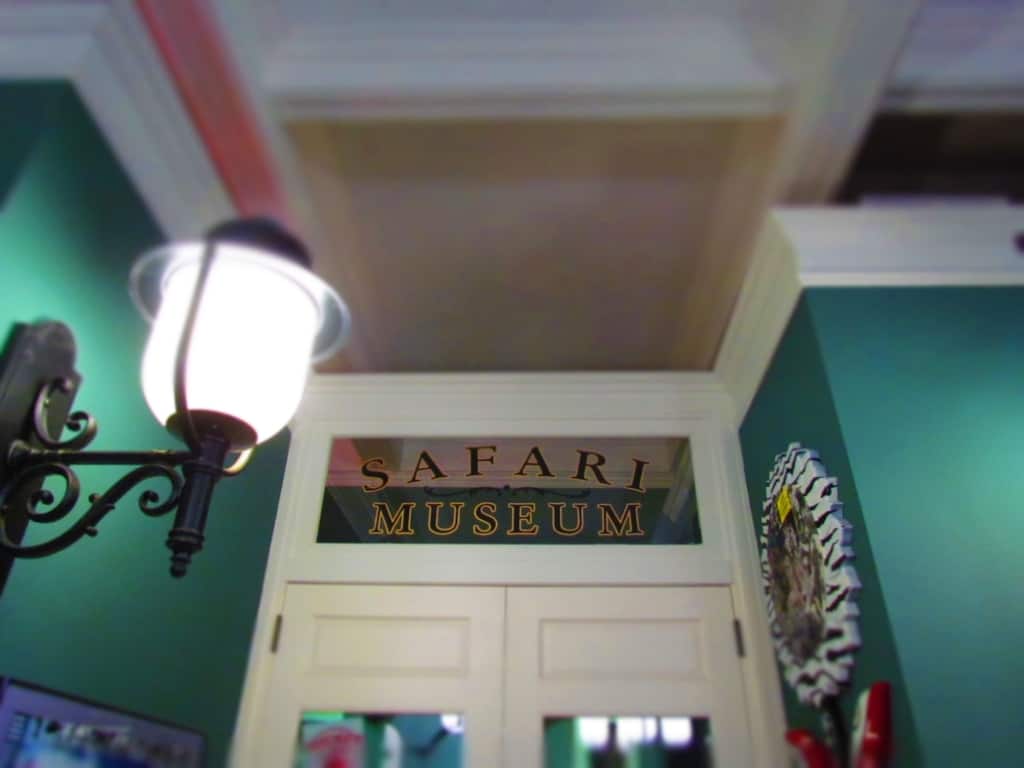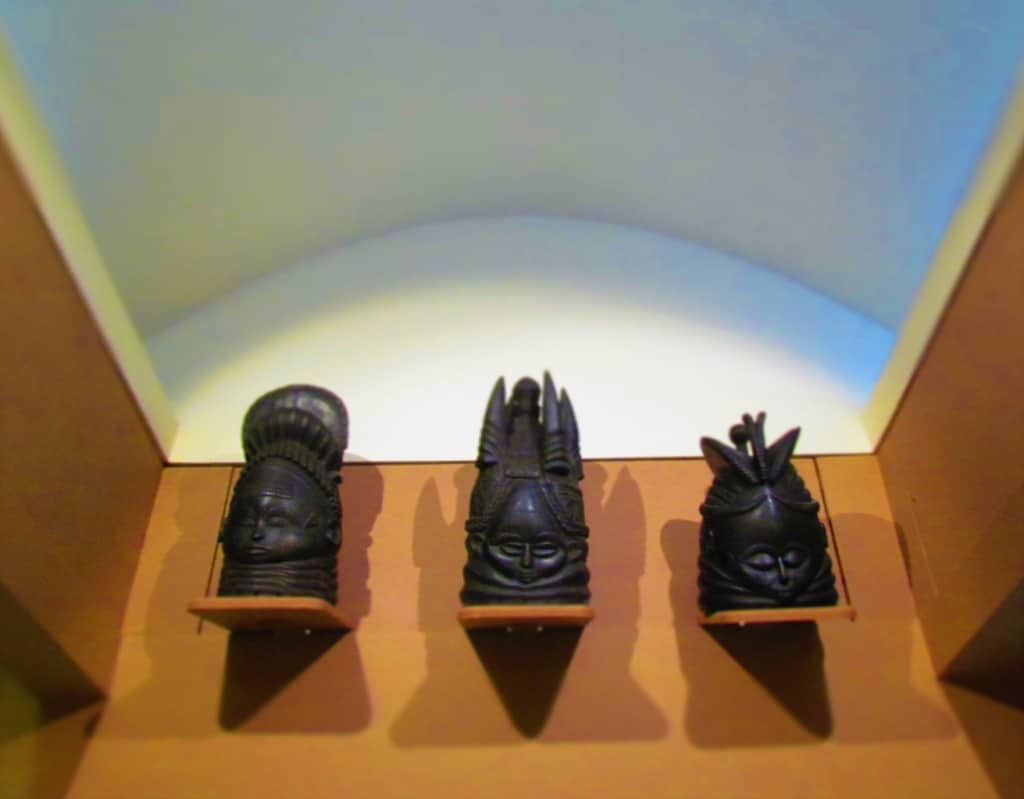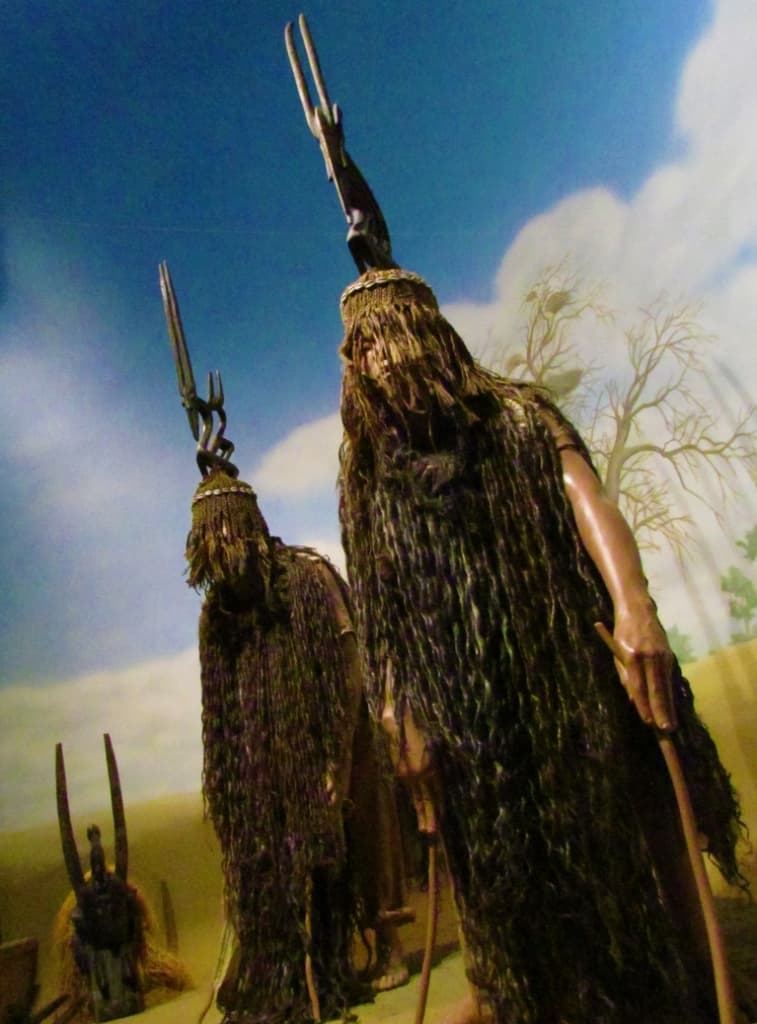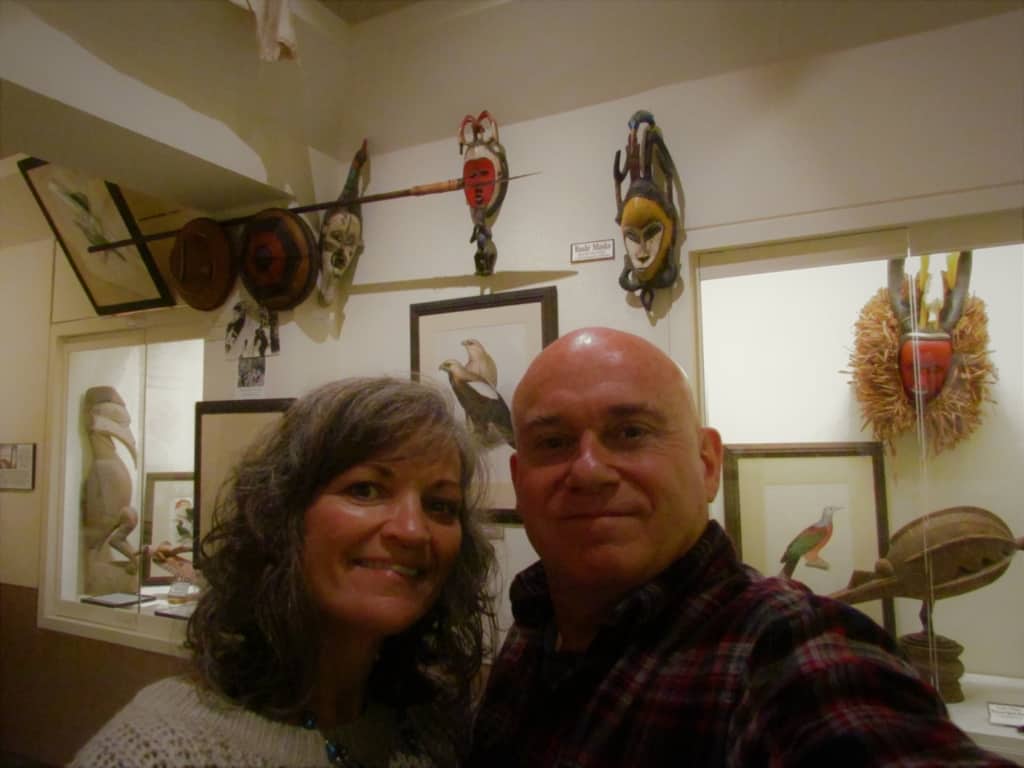We both enjoy watching nature programs and seeing animals in their native environments. Like most people, the only time we see many of these creatures in real life is at a zoo. A visit to Chanute, Kansas opened our eyes to the Martin & Osa Johnson Safari Museum. It’s fun to consider the experience of an African safari, but couldn’t imagine being some of the first to ever do this. You can imagine our surprise when we found out that this was actually accomplished by a young couple from southeast Kansas. What we found was not just a collection of artifacts and photos, but the story of their adventurous spirits that led them on years of exploration.
We want to thank the Chanute, Kansas Tourism Office and the Martin & Osa Johnson Safari Museum for their hospitality. Rest assured that all opinions are our own.

Faraway Lands
A friend of ours recently returned from an African safari. This trip was well-planned and followed a set schedule. They traveled from camp to camp, which were set up by guides and assistants. Trucks were arranged to shuttle them from point-to-point, as well as chauffeuring them on excursions to view animals in the wild. While this still has a sense of being somewhat in the wild, it is a fairly domesticated experience these days. Visiting the Johnson Safari Museum showed us a glimpse of what it was like to be some of the earliest adventurers to explore Africa, South Pacific islands, and Borneo. After a brief discussion with Jackie Borgeson, the museum curator, we were ready to learn more about this interesting couple.

Martin & Osa Johnson Record For Posterity
During their years of exploration, the couple not only experienced many firsts, but were some of the first to record these images. Using what was the most technologically advanced equipment of that era, they traveled into remote regions to capture and document nature. Their films are witness to the unbelievable beauty and grandeur that existed on a larger scale than will ever be seen again. Their movies and books are historical records of days long gone.

An Unexpected Beginning
Martin Johnson grew up in the middle of the country, but yearned for adventure. In 1907, he joined Jack London’s (author of Call of the Wild) voyage across the Pacific. To get passage, he stretched the truth about his cooking abilities. Part of the way through the journey, his inability became apparent and he was moved to the role of navigator. After the expedition, Johnson toured the country displaying the photos and artifacts from his trip. While on tour, Martin met Osa in Chanute, where she was singing. They wed in 1910 and spent the next seven years traveling the US and Europe showcasing the memories from his trip.

Creating New Memories
In 1917, the couple departed on a trip to the Solomon Islands. Here they would end up captured by cannibals, but escape after a gunship appeared. They returned to the island a couple years later, but this time with an armed guard. During the second visit they showed the tribe the movie reel they had produced from their earlier visit. The natives were amazed at the moving pictures and would holler out the names of tribesmen as they flashed across the screen. They returned home in 1920 to release the movies associated with the locations they had visited.

A Change Of Venue
In 1921 the Johnson’s set out on their first trip to Africa. It took most of a year, and then they returned to release another movie. This was a pattern that had repeated out of necessity. To fund their trips they would need to acquire sponsors. To repay these up front investments, they would have to produce movies and travel on lecture circuits promoting them. In 1924 they launched on their longest endeavor. For three years they would work out of a lakeside base in Kenya. The result of all of this time would be three separate movies. We found ourselves mesmerized by the photos of their journeys. These are mostly what they returned with, so many of the artifacts in the museum were collected after their adventures.

Martin and Osa would make four more memorable trips to Africa. On one they were accompanied by George Eastman of Eastman Kodak fame. During this visit, they would take footage that included some of the first “talkies” clips. The movie, “Across the World with Mr. and Mrs. Johnson” would introduce the sounds of lions roars to the American public. During a return home to Chanute, the couple got their pilots licenses. Returning to Africa, they flew the length of the continent filming the massive herds of animals crossing the lands.

Tragedy Strikes The Johnson’s
Ironically, after the thousands of miles the couple flew, tragedy struck during a commercial flight in the states. In January, 1937, Martin was killed in the crash and Osa was severely injured. She would eventually recover and continue the work that the couple held so dear. Osa wrote the book “I Married Adventure”, which would be turned into a movie using footage from their journeys. Osa Johnson would continue writing and traveling the lecture circuit until her death in 1953.

Wide Reach Of The Johnson’s
When we scheduled our visit, we were unaware of the massive impact that the Johnson’s had made on the world around us. This unassuming couple had braved adventures untold in their effort to share their passion with others. The Martin & Osa Johnson safari Museum is the most obvious mark left form their journeys, but we were surprised to learn that there have been nods given to their accomplishments by others. The Walt Disney Company licensed the rights to some of their materials to use in Disney World. Those who have been consistent shoppers at American Eagle brands can probably remember the Martin +Osa line of clothing. Some articles of clothing included “1910” (The year they were married.) or “S-38” and “NC-52V”, which were the registration numbers of their air crafts.

Planning Your Own Adventure
The museum has two floors of exhibits to view. The first floor is dedicated to artifacts and photos from their African journeys. An amazing collection of masks are the highlight, which made me extremely happy to see. The size and breadth of the collection is massive, and has to be seen in person. Moving to the second floor, we found the rotating exhibit area, which featured birds from the places they had visited. This will be changing soon, and the next exhibit will feature recipes and cooking artifacts from their camps in the wild. Osa had attempted to keep life close to normal by altering local recipes to include the ingredients found in the regions they visited. The second floor also includes an area where kids can have some hands-on fun with various musical instruments, masks, and toys that were familiar to the indigenous people from their visits. We left the museum amazed that this adventurous couple had evaded our knowledge for so long. Our hope is that this article will spark the desire for you to make plans to check out this museum and the story that it tells.






Enjoyed your article. My employer of 26 yrs helped to start this museum. He was very dedicated and spent many hours on the museum. He died Sept. 20l8 at 94. Of course his memorial was for the museum. I also knew Osa Martin’s mother a little bit as she was a good friend of my first employer and Mrs. Leighty asked her if someone in her office would type a letter to her book editor in New York City so I typed the letter. I may have typed several letters but do not remember. That was probably back around 1958.
Thanks for sharing those memories. It sounds like you have some wonderful experiences to share.
What an amazing story. They were wat ahead of their times! Never heard if this Museum. Thanks!
Hopefully you will get the opportunity to visit. It’s not far from Pittsburg, Kansas.
What a fascinating museum. I always like to read about early travellers – as you say, their experiences were very different to ours.
So true. It’s amazing the things they accomplished in those days.
Wow, this is a great story. I’d love to visit this museum, and will keep an eye out for work published by or about these two. In a way, they were precursors to travel bloggers!:) Thanks for the interesting post.
A very interesting perspective. Thanks for visiting.
Very interesting! Who would think you’d find a Safari Museum in Kansas?
Exactly!
I had never heard of Martin and Osa Johnson before I read your informative article. They were very brave and adventurous to set out to explore the far reaches of the world. It’s amazing too to learn they contributed to the Walt Disney Company and Eagle Creek! Fascinating!!
They were certainly ahead of their time.